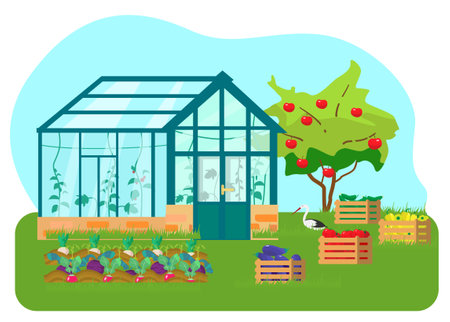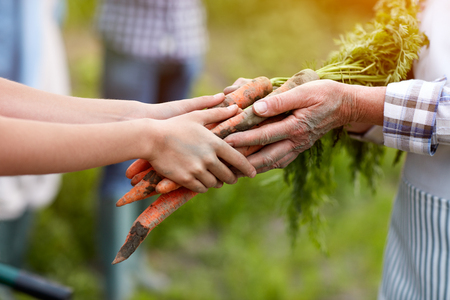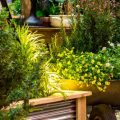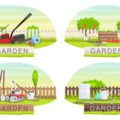1. Why Composting Matters
Composting is one of the easiest and most effective ways you can make a positive impact on the environment right from your own backyard. For beginners, its a simple habit that brings big benefits—not just for your garden, but also for your household and the planet.
Environmental Benefits
Every year, millions of tons of food scraps and yard waste end up in American landfills. When organic waste breaks down in landfills without oxygen, it produces methane—a potent greenhouse gas. Composting helps reduce this waste and lowers harmful emissions.
Impact of Waste Reduction
| Type of Waste | Average Annual Household Waste (lbs) | Compostable Portion (%) |
|---|---|---|
| Food Scraps | 325 | 60% |
| Yard Trimmings | 250 | 100% |
By composting these materials at home, youre not only cutting down on trash but also helping reduce landfill space and greenhouse gas emissions.
Personal Benefits
Besides helping the environment, composting offers clear advantages for your home and garden. Compost enriches soil naturally, improving its structure and boosting its ability to retain water and nutrients. That means healthier plants, better vegetable yields, and less need for chemical fertilizers.
Compost vs. Chemical Fertilizer Comparison
| Feature | Compost | Chemical Fertilizer |
|---|---|---|
| Nutrient Source | Organic & natural | Synthetic chemicals |
| Soil Health Impact | Improves long-term soil health | Can degrade soil over time |
| Cost | Free (homemade) | Ongoing expense |
A Step Toward Sustainable Living
For many American households, composting is a small step toward a more sustainable lifestyle. It fits right in with recycling, conserving energy, and reducing single-use plastics. Plus, teaching kids about composting is a great way to raise awareness about environmental responsibility from an early age.
A Quick Recap of Why Composting Matters:
- Cuts down on household waste
- Lowers methane emissions from landfills
- Naturally enriches your garden soil
- Saves money on fertilizers and soil conditioners
- Supports eco-friendly habits at home
If youre looking for a practical way to live greener and create less waste, backyard composting is a fantastic place to start.
2. Choosing the Right Composting Method
When it comes to backyard composting, theres no one-size-fits-all solution. The best method for you depends on your available space, how much time and effort you want to invest, and the types of materials you plan to compost. Let’s explore the most popular composting methods used in American backyards so you can choose the one that suits your lifestyle.
Bin Composting
Bin composting is one of the most common and beginner-friendly methods. It involves using a container—either homemade or store-bought—to hold your compost materials. These bins help keep everything tidy and contained, making them ideal for suburban yards or even small garden spaces.
Pros:
- Neat and organized
- Helps retain heat and moisture for faster decomposition
- Can be pest-resistant if properly sealed
Cons:
- Requires manual turning with a pitchfork or shovel
- May take longer to produce finished compost compared to other methods
Tumbler Systems
A compost tumbler is a closed container mounted on a frame that allows you to spin it, mixing your compost materials easily. This method is perfect if youre looking for a more hands-off approach and faster results.
Pros:
- Easy to turn—just rotate the barrel
- Speeds up decomposition due to better aeration
- Keeps pests out completely
Cons:
- More expensive upfront cost
- Limited capacity—may not work well for larger households or gardens
Open Pile Composting
This traditional method involves creating a simple heap of organic material directly on the ground. Its great if you have a large backyard and don’t mind a more rustic look.
Pros:
- No equipment needed—just start piling!
- Easily scalable for larger volumes of waste
- Great for rural or spacious properties
Cons:
- Less tidy appearance
- Attracts animals if not properly managed
- Takes longer to break down unless turned regularly
Comparison Table of Composting Methods
| Method | Best For | Main Benefits | Main Drawbacks |
|---|---|---|---|
| Bin Composting | Small to medium yards, beginners | Tidy, retains heat/moisture, pest-resistant options available | Needs manual turning, slower process |
| Tumbler System | Busy gardeners, urban/suburban areas | No mess turning, fast results, fully enclosed system | Higher cost, limited capacity |
| Open Pile Composting | Large yards, rural settings, high volume needs | No cost, large scale composting possible | Pest risk, visually messy, slower breakdown without maintenance |
No matter which method you choose, the key is finding one that fits your backyard size, time commitment, and gardening goals. Once you’ve got that figured out, you’re well on your way to producing rich, healthy compost right at home.

3. What You Can and Can’t Compost
One of the most important steps in successful backyard composting is knowing what you should and shouldn’t toss into your compost pile. Adding the right materials helps create a nutrient-rich compost while keeping odors and pests away.
What You CAN Compost
These items are considered compost-friendly and break down easily, helping to create rich, fertile soil for your garden.
Kitchen Scraps
- Fruit and vegetable peels
- Coffee grounds and filters
- Tea bags (make sure they’re plastic-free)
- Eggshells (crushed for faster breakdown)
- Bread and grains (in small amounts)
Yard Waste
- Grass clippings
- Leaves (shredded works best)
- Small branches and twigs
- Plant trimmings
- Sawdust from untreated wood
Other Compostable Items
- Paper towels and napkins (unbleached, with no chemicals)
- Cardboard (shredded, non-glossy)
- Hair and pet fur
- Wood chips (in moderation)
What You SHOULD NOT Compost
Certain items can attract pests, produce bad smells, or introduce harmful bacteria into your compost pile. Heres what to keep out:
| Material | Why to Avoid It |
|---|---|
| Meat, fish, and bones | Attracts pests and creates strong odors |
| Dairy products | Moldy buildup and unpleasant smell |
| Greasy or oily foods | Slows down decomposition and attracts animals |
| Pesticide-treated plants | Chemicals may kill beneficial compost microbes |
| Pet waste (cats/dogs) | Can contain harmful pathogens and parasites |
| Synthetic materials (plastic, foil) | Non-biodegradable; won’t break down in compost |
A Balanced Mix Is Key
Your compost pile needs the right mix of “greens” (nitrogen-rich materials like food scraps) and “browns” (carbon-rich materials like dry leaves). Aim for about a 2:1 ratio of browns to greens to keep your pile healthy and avoid odors. Regularly turning your compost will also help speed up the decomposition process.
Quick Tip:
If youre ever unsure whether something can be composted, it’s safer to leave it out. When in doubt, stick to raw fruit and veggie scraps along with yard waste.
4. Building and Maintaining Your Compost Pile
If youre new to backyard composting, building your first compost pile might seem a little intimidating—but don’t worry! With the right balance of materials and a few simple habits, you’ll be turning kitchen scraps and yard waste into nutrient-rich compost in no time.
Step-by-Step: How to Layer Your Compost
Compost piles thrive on a balance between “greens” (nitrogen-rich materials) and “browns” (carbon-rich materials). Heres a simple way to start layering:
Basic Layering Guide
| Layer | Material Type | Examples |
|---|---|---|
| Bottom | Browns | Dry leaves, small branches, shredded newspaper |
| Middle Layers (repeat) | Alternate Greens & Browns | Kitchen scraps (greens), followed by dry grass or cardboard (browns) |
| Top | Browns | A final layer of browns helps reduce odor and deter pests |
Proper Aeration: Let It Breathe
Your compost pile needs oxygen to support the microbes that break down organic matter. Turn your pile with a pitchfork or shovel every 1–2 weeks. This helps speed up decomposition and keeps smells at bay.
Aeration Tips:
- If your pile is large, mix from the center outwards.
- Add bulky browns like twigs or corn stalks to improve airflow.
- A compost tumbler can make aerating easier if space is limited.
Maintaining Moisture Levels
Your compost should feel like a wrung-out sponge—not too wet, not too dry. Here’s how to manage moisture:
Moisture Management Table
| Condition | What It Means | What To Do |
|---|---|---|
| Too Dry | Pile isn’t breaking down well; dusty or crumbly texture | Add water gradually while turning; mix in more greens like fruit scraps or fresh grass clippings |
| Too Wet | Pile smells sour; soggy texture | Add more browns like shredded paper or dry leaves; turn the pile more frequently for better airflow |
Troubleshooting Common Issues
Bad Smells?
This usually means there’s too much green material or not enough oxygen. Add dry browns and turn the pile more often.
Pile Not Decomposing?
If things aren’t breaking down, your pile might be too dry, too cold, or lacking nitrogen. Try adding more greens and lightly watering if needed. Turning the pile can also help activate microbial activity.
Pests?
A well-maintained compost pile shouldn’t attract animals. Avoid adding meat, dairy, oily foods, or pet waste. Always cover food scraps with a layer of browns.
By following these tips, youll create a healthy, active compost system that transforms everyday waste into black gold for your garden!
5. Harvesting and Using Your Finished Compost
After weeks or months of patiently tending your compost pile, it’s finally time to reap the rewards. But how do you know when your compost is ready to use, and what’s the best way to apply it around your backyard garden? Here’s everything you need to know about harvesting and using finished compost.
How to Tell When Compost Is Ready
Finished compost should look, feel, and smell like rich, dark soil. It will be crumbly in texture, have an earthy scent (not rotten or sour), and most of the original materials—like food scraps or leaves—should no longer be recognizable. Depending on your method and conditions, this can take anywhere from two months to a year.
Signs Your Compost Is Ready:
| Sign | Description |
|---|---|
| Dark Brown Color | Looks like topsoil with no visible food scraps |
| Earthy Smell | No foul or sour odor; smells like fresh soil |
| Crumbly Texture | Easily breaks apart in your hand |
| Cool Temperature | Pile is no longer hot in the center |
Sifting Your Compost
Sifting helps remove any large chunks or undecomposed material before using compost in your garden. You can use a simple homemade screen made from wire mesh and a wooden frame. Just shovel the compost onto the screen and shake it over a wheelbarrow or bin. Any leftover bits can go back into the compost pile for further breakdown.
Best Ways to Use Finished Compost
Compost is a powerhouse for soil health—it adds nutrients, improves structure, and helps retain moisture. Heres how you can use it effectively in different parts of your yard:
Where and How to Apply Compost:
| Location | Application Method |
|---|---|
| Garden Beds | Mix 1–2 inches of compost into the top few inches of soil before planting |
| Lawn | Spread a thin layer (about ½ inch) over the grass in early spring or fall as a top dressing |
| Potted Plants | Add compost as up to one-third of your potting mix or sprinkle on top as a slow-release nutrient source |
| Trees & Shrubs | Apply a 1–2 inch layer around the base (but not touching the trunk) to improve soil quality over time |
Tips for Storing Extra Compost
If you’ve made more compost than you can immediately use, store it in a covered bin or pile it in a dry spot protected from rain. Keeping it slightly moist but not soggy will preserve its beneficial microbes until youre ready to use it.
With these simple steps, you’ll get the most out of every batch of backyard compost—and your garden will thank you for it!


